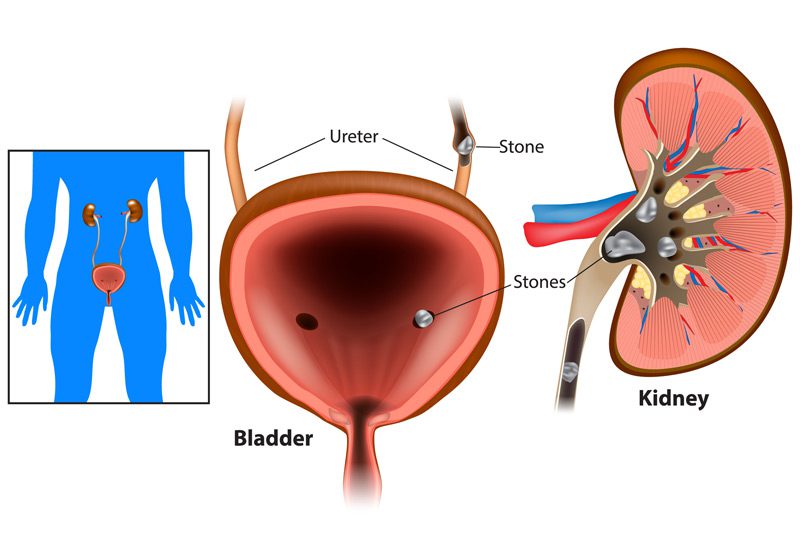

Cystolitholapaxy is a minimally invasive procedure used to treat bladder stones—hard mineral deposits that form in the bladder, often as a result of urinary retention, bladder outlet obstruction, or incomplete bladder emptying. Bladder stones can cause discomfort, infections, or obstruction of urinary flow, and they may be associated with conditions such as benign prostatic hyperplasia (BPH), neurogenic bladder, or the presence of a foreign body like a urinary catheter.
Symptoms of Bladder Stones
Patients with bladder stones may experience:
- Lower abdominal or pelvic pain
- Painful urination (dysuria)
- Frequent urination or urinary urgency
- Blood in the urine (hematuria)
- Difficulty urinating or interrupted flow
- Recurrent urinary tract infections
Symptoms tend to worsen as the stone grows or causes inflammation and blockage.

Causes and Risk Factors
Bladder stones often develop due to urine stasis or residual urine in the bladder. Contributing factors include:
- Bladder Outlet Obstruction: Most commonly due to an enlarged prostate (BPH)
- Neurogenic Bladder: Nerve-related bladder dysfunction from spinal cord injuries or neurological diseases
- Foreign Bodies: Indwelling catheters or migrated surgical materials
- Urinary Tract Infections: Chronic infections can alter urine composition and promote stone formation
- Bladder Diverticula: Pouches in the bladder wall that trap urine
Diagnosis
To evaluate the presence and size of bladder stones, urologists may perform:
- Urinalysis: To detect blood, infection, or crystal formations
- Imaging Studies: X-ray, ultrasound, or CT scan to locate and size the stones
- Cystoscopy: Direct visual inspection of the bladder using a camera-equipped scope
Cystolitholapaxy Procedure
Cystolitholapaxy involves the insertion of a cystoscope through the urethra into the bladder. Once the stone is visualized, a mechanical, ultrasonic, or laser lithotripter is used to break the stone into smaller fragments. These pieces are then flushed or evacuated from the bladder using irrigation and suction.
- Transurethral Approach: Most common, using natural urinary pathways
- Percutaneous Approach: Used for very large stones or patients with complex anatomy, accessing the bladder through a small incision in the abdomen
The procedure is typically performed under general or spinal anesthesia and is completed as an outpatient or short-stay hospital procedure.
Recovery and Outcomes
Most patients experience rapid relief of urinary symptoms and can resume normal activities within a few days. Postoperative care may include:
- Temporary urinary catheter for drainage
- Antibiotics if infection was present
- Follow-up cystoscopy or imaging to confirm complete stone removal
Next Steps
If you are experiencing recurrent urinary symptoms or have been diagnosed with a bladder stone, cystolitholapaxy may be an effective, minimally invasive treatment option. Early intervention can help prevent complications like infection, bladder damage, or worsening obstruction. A consultation with a urologist will help determine the best approach based on the size, location, and cause of the bladder stone.
